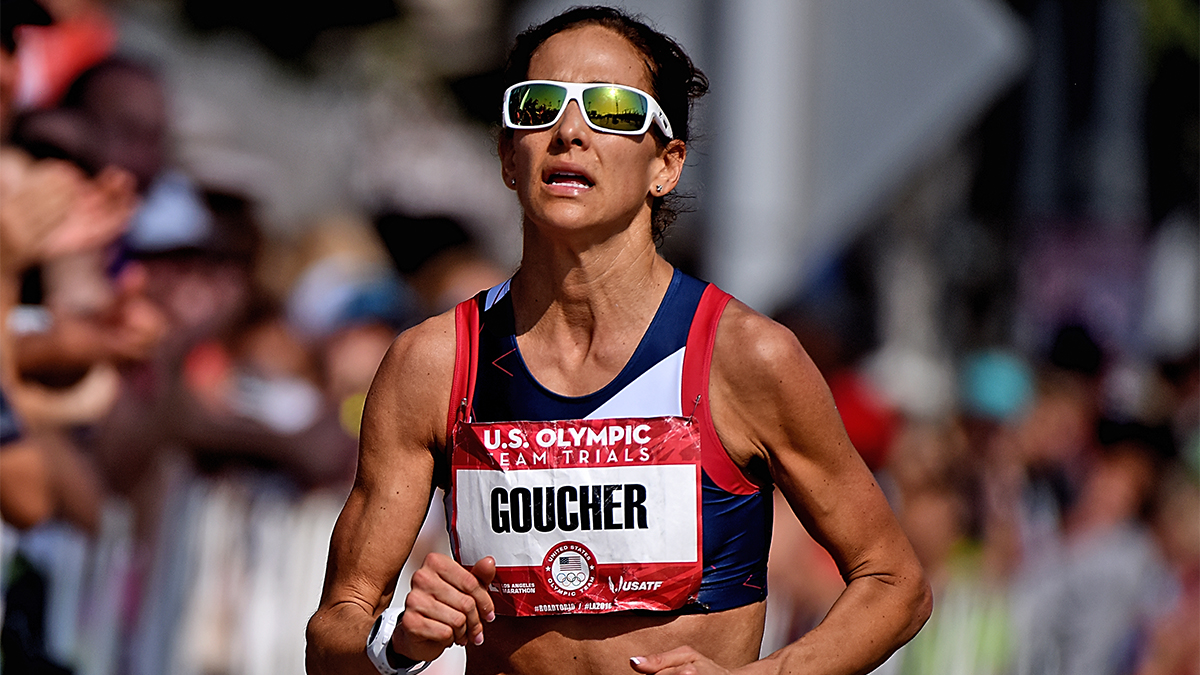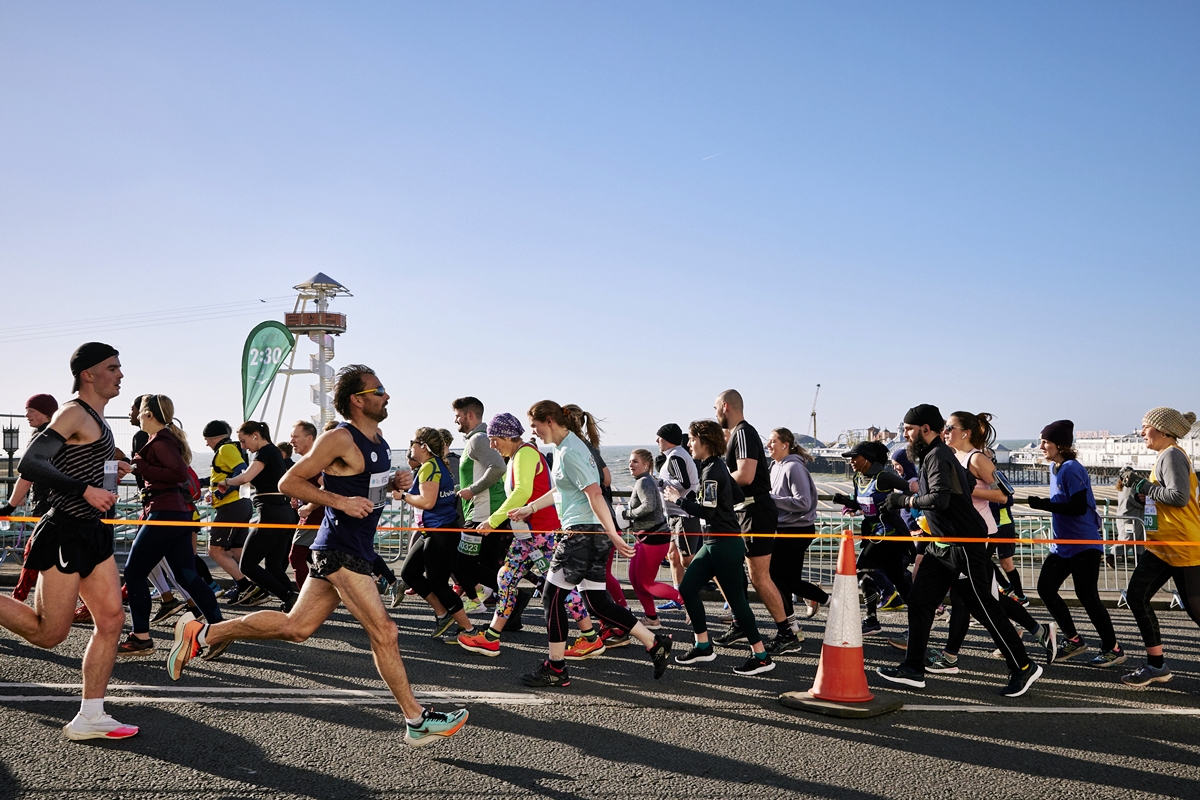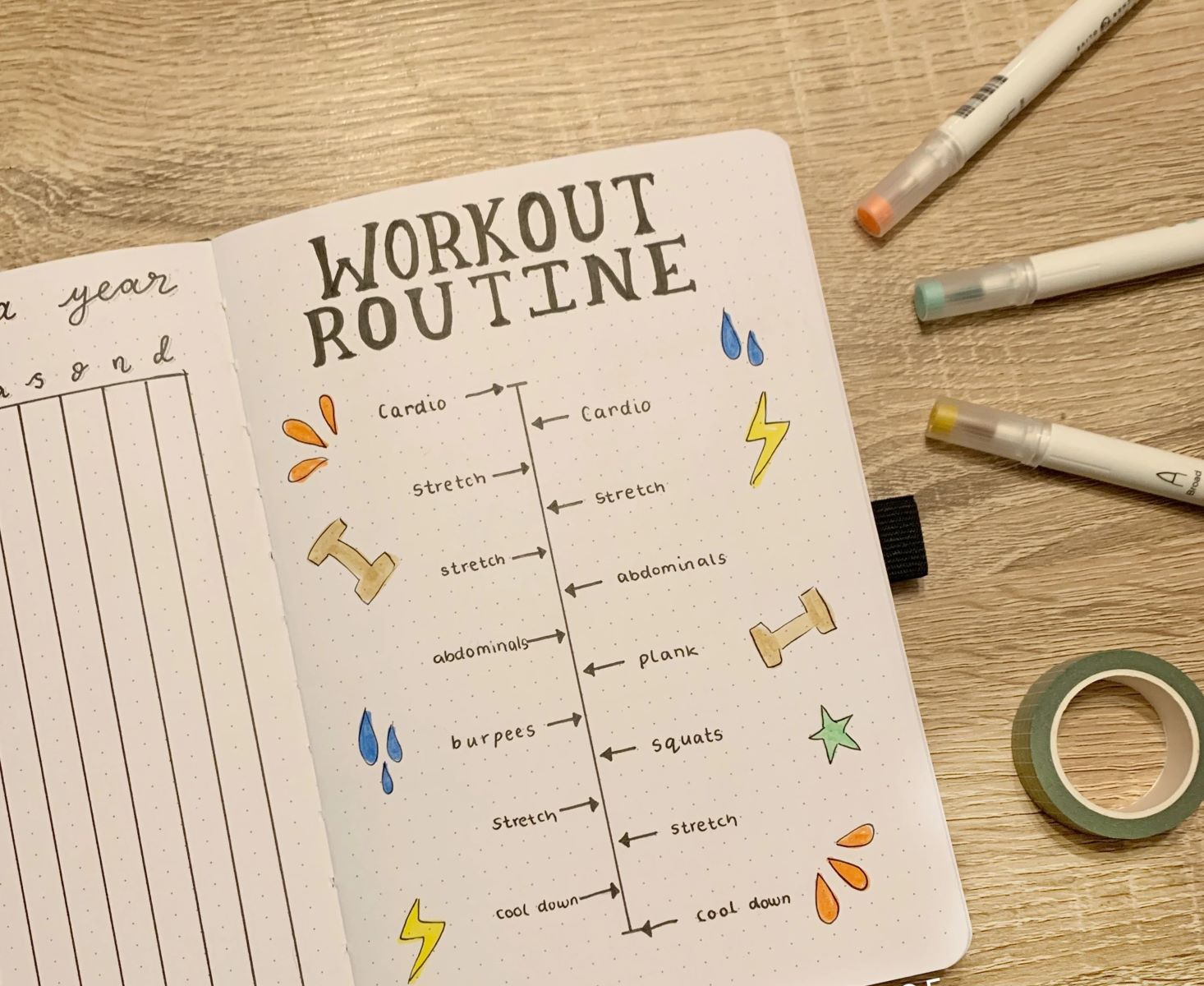Home>Misc>Featured>Why Can You Do Distance Running In Your 30s


Featured
Why Can You Do Distance Running In Your 30s
Modified: August 21, 2023
Discover why distance running is still achievable in your 30s. Read our featured article on the benefits and tips for successful running in this age group.
Introduction
Distance running is a popular form of exercise and a highly rewarding activity for individuals of all ages. Many people believe that they need to start distance running in their early 20s, while their bodies are young and resilient. However, this perception overlooks the tremendous benefits and possibilities that come with starting distance running in your 30s.
By the time you reach your 30s, you have likely established a solid foundation of fitness and have a better understanding of your body’s capabilities. You may have more time and flexibility in your schedule to prioritize your health and wellness. Additionally, as you enter your 30s, you may find yourself more motivated to take on new challenges and set new fitness goals.
Distance running offers a multitude of benefits, both physical and psychological. It helps improve cardiovascular health, strengthens the muscles and joints, boosts energy levels, and aids in weight management. Beyond the physical benefits, running can also serve as a stress reliever, enhance mental clarity, boost creativity, and foster a sense of accomplishment and self-discipline.
In this article, we will explore why you can successfully embark on a distance running journey in your 30s. We will discuss the physical and psychological changes that occur during this stage of life and how they can contribute to your running performance. We will also provide practical tips for getting started and highlight key strategies for injury prevention and recovery.
Benefits of Distance Running
Distance running offers a wide range of benefits that extend beyond just physical fitness. Here are some of the key advantages:
- Improved cardiovascular health: Distance running is a great way to strengthen your heart and improve blood circulation, reducing the risk of cardiovascular diseases.
- Weight management: Running burns calories and can help with weight loss or weight maintenance. It increases your metabolism and helps you maintain a healthy body weight.
- Strengthened muscles and joints: The repetitive motion of running helps to strengthen the muscles in your legs, core, and upper body. It also promotes healthy bone density and joint strength.
- Stress relief: Running releases endorphins, which are natural mood elevators. It helps reduce stress levels, improve sleep quality, and enhance overall mental well-being.
- Mental clarity and focus: Distance running provides an opportunity to clear your mind, improve concentration, and boost creativity. It can help you think more clearly and problem-solve effectively.
- Sense of accomplishment: Achieving your running goals, whether it’s completing a specific distance or setting a personal record, can boost your self-confidence and give you a sense of accomplishment.
- Improved self-discipline: Distance running requires commitment, consistency, and self-discipline. By incorporating running into your routine, you cultivate discipline that can positively impact other areas of your life.
These benefits highlight why distance running is a valuable activity to incorporate into your fitness regimen, regardless of your age. As you approach your 30s, taking up distance running can provide a multitude of rewards for both your physical and mental well-being.
Physical Changes in Your 30s
When you reach your 30s, you may start to notice some physical changes in your body. However, these changes don’t necessarily mean that distance running becomes impossible or less effective. Here are some of the common physical changes that occur during this stage:
- Reduced muscle mass and strength: As you age, there is a natural decline in muscle mass and strength. However, incorporating strength training exercises alongside your distance running can help counteract this decline and maintain muscle function.
- Decreased flexibility: Flexibility tends to decrease with age, which can affect your running mechanics and increase the risk of injuries. Regular stretching and mobility exercises can help improve flexibility and maintain healthy range of motion.
- Slower metabolism: Metabolism tends to slow down as you enter your 30s, making weight management more challenging. However, regular distance running can help boost your metabolism and aid in maintaining a healthy body weight.
- Reduced aerobic capacity: Your body’s maximum oxygen uptake (VO2 max) naturally decreases with age. However, regular aerobic exercise like distance running can help mitigate this decline and improve your cardiovascular fitness.
- Increased susceptibility to injuries: Aging can make you more prone to overuse injuries, such as tendonitis or stress fractures. It’s crucial to listen to your body, incorporate proper rest days, and gradually increase your running intensity to prevent injuries.
- Slower recovery: As you get older, your body may take longer to recover from intense workouts. Proper post-run recovery, including stretching, foam rolling, and adequate rest, becomes even more important in your 30s.
While these physical changes are a natural part of the aging process, they should not discourage you from embracing distance running in your 30s. With proper training, nutrition, and injury prevention strategies, you can effectively adapt to these changes and continue to enjoy the numerous benefits of distance running.
Psychological Changes in Your 30s
Aside from the physical changes, your 30s also bring about various psychological shifts that can impact your approach to distance running. Understanding these changes can help you make the most out of your running experience. Here are some common psychological changes that occur during this stage:
- Increased self-awareness: As you enter your 30s, you may have a better understanding of your strengths, weaknesses, and overall self. This self-awareness can translate into setting realistic goals and pacing yourself effectively in your distance running journey.
- Stronger motivation: In your 30s, you may experience a renewed sense of motivation and desire to challenge yourself physically and mentally. Whether it’s to overcome personal obstacles or achieve new milestones, this motivation can drive you to succeed in your distance running endeavors.
- Improved time management: By the time you reach your 30s, you may have developed effective time management skills, allowing you to prioritize your health and fitness goals. You can find the balance between your professional and personal responsibilities, making time for regular running sessions.
- Increased stress and responsibilities: With the demands of career, family, and other responsibilities, your stress levels may be higher in your 30s. Distance running can serve as a valuable outlet to manage stress, boost mood, and improve overall mental well-being.
- Enhanced mental resilience: Life experiences and challenges in your 30s can contribute to the development of mental resilience. Distance running can further enhance this resilience by pushing you to overcome obstacles, develop perseverance, and cultivate a strong mindset.
Embracing the psychological changes that come with your 30s can greatly benefit your distance running journey. Recognizing your motivations, managing stress, and leveraging your enhanced self-awareness can help you stay focused, motivated, and mentally prepared for the challenges ahead.
Advantages of Starting Distance Running in Your 30s
While many people believe that distance running is an activity best started in one’s younger years, there are several advantages to starting this journey in your 30s. Here are some of the key advantages:
- Physical foundation: By the time you reach your 30s, you likely have a solid foundation of fitness built from previous activities and exercises. This foundation can provide a strong base for distance running and potentially lead to faster progress and improved endurance.
- Mental maturity: Your 30s often bring a sense of mental maturity and a better understanding of your personal goals and limits. This maturity can help you approach distance running with a balanced mindset, set realistic goals, and stay committed to your training.
- Increased motivation: In your 30s, you may have a heightened motivation to prioritize your health and well-being. This motivation can fuel your commitment to distance running, allowing you to push yourself and achieve new milestones.
- Less external pressure: Starting distance running in your 30s may come with fewer external pressures compared to starting in your younger years. This can give you the freedom to embrace the activity solely for your own enjoyment and personal growth.
- Community support: Most cities and towns have vibrant running communities that offer support, encouragement, and opportunities to connect with fellow runners. Engaging with this community can provide a sense of camaraderie and motivation, especially when starting in your 30s.
- Long-term perspective: Starting distance running in your 30s lends itself to a long-term perspective. You can approach the activity with the intention of making it a sustainable habit that contributes to your overall health and well-being for years to come.
These advantages highlight why starting distance running in your 30s can be a wise decision. With a solid foundation, mental maturity, and increased motivation, you can fully embrace the journey, reap the benefits, and enjoy the process of becoming a distance runner.
Tips for Distance Running in Your 30s
Getting started with distance running in your 30s requires some careful planning and strategic approaches. Here are some essential tips to help you on your journey:
- Consult with a healthcare professional: Before embarking on any new exercise regimen, it’s crucial to consult with a healthcare professional to ensure your body is ready for the physical demands of distance running.
- Start with a gradual and structured training program: Avoid pushing yourself too hard from the beginning. Instead, start with a gradual buildup of mileage and incorporate interval training, tempo runs, and long runs into your training plan to improve endurance and pace.
- Invest in proper running gear: Invest in a good pair of running shoes that provide ample cushioning and support for your feet. Additionally, wear moisture-wicking clothing to keep you comfortable and dry during your runs.
- Focus on strength training: Incorporate regular strength training exercises into your routine to build overall body strength and help prevent injuries. Focus on exercises that target the muscles used in running, such as squats, lunges, and core exercises.
- Prioritize rest and recovery: As you get older, your body may take longer to recover from intense workouts. Give yourself enough time to rest and recover between runs. Incorporate active recovery days with low-impact exercises like swimming or cycling.
- Listen to your body: Pay attention to any signs of pain or discomfort during your runs. It’s important to listen to your body and take necessary rest days if you experience any injuries or persistent pain.
- Hydrate and fuel properly: Stay hydrated by drinking enough water throughout the day and fuel your body with the right nutrients and balanced meals to support your running performance.
- Find a running buddy or join a group: Running with a partner or joining a running group can provide support, encouragement, and accountability. It can also make your running journey more enjoyable and fulfilling.
- Set realistic goals: Establish both short-term and long-term goals that are achievable and realistic for your current fitness level. Celebrate your progress along the way to stay motivated and inspired.
- Stay consistent and be patient: Distance running is a long-term commitment that requires consistency and patience. Trust the process, stay consistent with your training, and give yourself time to progress and improve gradually.
By following these tips, you can navigate the challenges and make the most out of your distance running journey in your 30s. Remember to listen to your body, stay committed, and enjoy the many benefits that distance running has to offer.
Injury Prevention and Recovery in Your 30s
As you begin your distance running journey in your 30s, it’s important to prioritize injury prevention and properly manage recovery to ensure longevity and maximize your performance. Here are some essential tips for injury prevention and recovery:
- Warm up and cool down: Prior to each run, dedicate time to warm-up exercises like dynamic stretches and light jogging. Likewise, after your run, allow for a cool-down period with static stretches to promote recovery and flexibility.
- Listen to your body: Pay attention to any discomfort or pain during running. If you notice persistent pain, decreased range of motion, or any other warning signs, take a break and seek advice from a healthcare professional.
- Include strength and cross-training: Incorporate regular strength training exercises to strengthen muscles and support your running form. Engaging in cross-training activities like cycling or swimming helps reduce the risk of overuse injuries.
- Gradual progression: Avoid sudden increases in mileage or intensity. Gradually increase your weekly mileage and incorporate interval training to allow your body to adapt and reduce the risk of overuse injuries.
- Rest and recovery: Recovery is vital to prevent injuries and help your body adapt to the stress of running. Ensure you have rest days scheduled in your training plan and prioritize sufficient sleep and proper nutrition for optimal recovery.
- Get regular sports massages: Consider incorporating regular sports massages into your routine to help with muscle recovery and alleviate any tightness or soreness from running.
- Listen to your footwear: Replace worn-out running shoes to maintain proper cushioning and support. It’s recommended to replace your shoes every 300-500 miles or every six months, depending on your running frequency and intensity.
- Work on flexibility and mobility: Incorporating regular stretching and mobility exercises can improve your running mechanics, prevent muscle imbalances, and reduce the risk of injuries.
- Consider professional guidance: If you’re new to distance running or have specific concerns, seeking guidance from a running coach or physical therapist can help you establish proper form, prevent potential issues, and aid in injury recovery.
- Stay hydrated and nourished: Proper hydration and nutrition are crucial for injury prevention and recovery. Drink enough water throughout the day and fuel your body with a balanced diet that includes an adequate amount of carbohydrates, proteins, and healthy fats.
By incorporating these injury prevention and recovery strategies into your distance running routine, you can minimize the risk of injuries, promote optimal recovery, and ensure a enjoyable and sustainable running experience in your 30s.
Conclusion
Starting distance running in your 30s offers a unique set of advantages and opportunities. While physical and psychological changes may occur during this stage of life, they should not deter you from embracing the benefits and joys of distance running. By understanding and adapting to these changes, you can enjoy a fulfilling running journey in your 30s.
From improved cardiovascular health and weight management to enhanced mental clarity and self-discipline, distance running provides a myriad of physical and psychological benefits. The physical changes in your 30s, such as reduced muscle mass and metabolism, can be mitigated through strength training, proper nutrition, and focused recovery strategies. Meanwhile, the psychological changes bring newfound motivation, self-awareness, and resilience to tackle the challenges that distance running presents.
To make the most out of distance running in your 30s, it’s important to follow key tips such as gradually increasing mileage, incorporating strength training, listening to your body, and prioritizing rest and recovery. Additionally, taking steps towards injury prevention and managing recovery effectively will contribute to a sustained and enjoyable running experience.
Remember, age is just a number when it comes to distance running. With the right mindset, preparation, and commitment, your 30s can be the perfect time to embark on a fulfilling and rewarding journey as a distance runner. So lace up your running shoes, set realistic goals, and enjoy the countless physical, mental, and emotional benefits that distance running has to offer.








